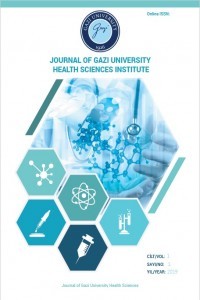In vitro Antibacterial, Antifungal and Anti-Mycobacterium Activity of Selected Lamiaceae and Asteraceae Species
In vitro Antibacterial, Antifungal and Anti-Mycobacterium Activity of Selected Lamiaceae and Asteraceae Species
In this study, six extracts obtained from various plants of Lamiaceae and Asteraceae families were screened in vitro against Gram negative and Gram positive bacteria, as well as Mycobacterium tuberculosis and two yeasts. Acetone extracts of Origanum glandulosum, Marrubium vulgare and Artemisia herba alba as well as ethanol extracts of Artemisia herba alba, A. absinthium and A. fragrance were used. Activity of the extracts were screened against Escherichia coli, Salmonella enteritidis; Staphylococcus aureus, Enterococcus faecalis; Candida albicans, Candida krusei and Mycobacterium tuberculosis H37Rv using micro-dilution method according to the Clinical and Laboratory Standards Institute. All the extracts showed antimicrobial activity against Gram positive and Gram negative bacteria at concentrations ranging between 64-256 µg/mL. Anti-Candida activities of the extract developed the same MIC values towards all the extracts tested (MIC: 128 µg/mL) whereas A. herba alba ethanol extract was more effective against C. krusei at the same potency as the standard fluconazole (MIC: 64 µg/mL). Anti-mycobacterium activity was at the same MIC values of 128 µg/mL for all the extracts tested. Tested total extracts showed antimicrobial activity with higher MIC values than standard antimicrobial agents. Fractions of extracts or isolated metabolites could prove to be more potent against pathogenic microorganisms.
Keywords:
Lamiaceae, Asteraceae Antimicrobial activity, Antifungal activity, Mycobacteria,
___
- Belhattab R., Larous L., Kalantzakis G., Boskou D., & Exarchou V. (2004). Antifungal properties of Origanum glandulosum Desf. extracts. Journal of Food, Agriculture and Environment, 2 (1), 69-73.
- Belhattab R., Larous L., Fgueirido A.C., Santos P.A.G., Barroso J.G., & Pedro L.G. (2005). Origanum glandulosum Desf. grown wild in Algeria: Essential oil composition and glycosidic bound volatiles. Flavour and Fragrance Journal, 20, 209-212.
- Bendahou M., Muselli A., Grignon-Dubois M., Benyoucef M., Desjobert J.M., Bernardini A.F., & Costa J (2008). Antimicrobial activity and chemical composition of Origanum glandulosum Desf. essential oil and extract obtained by microwave extraction: comparison with hydrodistillation. Food Chemistry, 106, 132-139.
- Clinical and Laboratory Standards Institute (CLSI; formerly NCCLS), National Committee for Clinical Laboratory Standards, Performance standards for Antimicrobial Susceptibility Testing; 16th Informational supplement. CLSI document M7-A7, 940 PA, 2006.
- Clinical and Laboratory Standards Institute (CLSI). Reference method for broth dilution antifungal susceptibility testing of yeast; approved standard- third edition. CLSI document M27-A3, Wayne, PA, 2008.
- Franzblau S.G., Witzig R.S., Mclaughlin J.C., Torres P., Madico G., Hernandez A., Degnan M.T., Cook M.B., Quenzer V.K., Ferguson R.M., & Gilman R.H. (1998). Rapid, Low-Technology MIC Determination with Clinical Mycobacterium tuberculosis Isolates by using the Microplate Alamar Blue Assay. Journal of Clinical Microbiology, 362–366.
- Kordali S., Cakir A., Mavi A., Kilic H., & Yildrim A. (2005). Screening of chemical composition and antifungal and antioxidant activities of the essential oils from three Turkish Artemisia species. Journal of Agricultural and Food Chemistry, 53, 408-416.
- Lawrence B.M. (1992). Chemical constituents of Labiate oils and their exploitation. In: Advances in Labiate Science. Edits, R.M. Harley and T. Reynolds, Royal Botanic Gardens, Kew, pp: 399- 436.
- Lopes-Lutz D., Alviano D.S., Alviano C.S., & Kolodziejczyk P.P. (2008). Screening of chemical composition, antimicrobial and antioxidant activities of Artemisia essential oils. Phytochemistry, 69(8), 1732-1738.
- Matasyoh J.C., Kiplimo J.J., Nicholas M., & Karubiu T.P. (2007). Hailstorks chemical composition and antimicrobial activity of essential oil of Tarchonanthus camphorates. Food Chemistry, 101, 1183–1187.
- Orhan D.D., Özçelik B., Ozgen S., & Ergun F. (2010) Antibacterial, antifungal, and antiviral activities of some flavonoids. Microbiological Research, 165, 496-504.
- Özçelik B., Orhan I., Kartal M., & Konuklugil B. (2010). In vitro testing of antiviral, antibacterial, antifungal effects and cytotoxicity of selected Turkish Phlomis species. Acta alimentaria, 39(2), 109-115.
- Özçelik B., Kartal M., & Orhan I. (2011). Cytotoxicity, antiviral antimicrobial activities of alkaloids, flavonoids and phenolic acids. Pharmaceutical Biology, 49(4), 396-402.
- Ozenda P. (2004). Flore et végétation du Sahara. (3rd Edtn), CNRS, Paris.
- Ruberto G., Baratta M.T., Sari M., & Kaabeche M. (2002). Flavour and Fragrance, Journal, 17, 251-254.
- Saxena G., McCutcheon A.R., Farmer S., Towers G.H.N., & Hancock R.E.W. (1994). Antimicrobial constituents of Rhus glabra. Journal of Ethnopharmacology, 42(2), 95-99.
- ISSN: 2687-6353
- Yayın Aralığı: Yılda 3 Sayı
- Başlangıç: 2019
- Yayıncı: Gazi Üniversitesi
Sayıdaki Diğer Makaleler
The Antioxidant Activities and Total Phenol Contents of Eleven Turkish Medicinal Plants
Didem Deliorman Orhan, Sanem Hoşbaş Coşkun
Nagehan AKTAŞ, Didem ATABEK, Gülçin AKÇA, Nurhan ÖZTAŞ
Berrin ÖZÇELİK, Rachid BELHATTAB, İlkay Erdoğan ORHAN
Autism Spectrum Disorder, Microbiota And Nutritional Therapy Approaches
